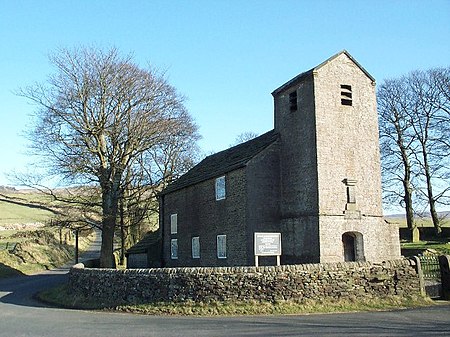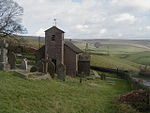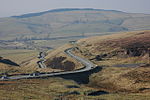Jenkin Chapel
Church of England church buildings in CheshireChurches completed in 1733Churches completed in 1755Diocese of ChesterGrade II* listed churches in Cheshire

Jenkin Chapel, stands in an isolated position on the western slopes of the Pennines, 4.3 miles (7 km) northeast of Macclesfield, Cheshire, England. It is recorded in the National Heritage List for England as a designated Grade II* listed building. The chapel lies at the junction of three ancient trackways, known as "salters' ways" because they were used by packhorses carrying salt. Later the tracks were used by cattle drovers and sheep dealers. It is an Anglican chapel in the diocese of Chester, the archdeaconry of Macclesfield and the deanery of Macclesfield. Its benefice is combined with those of Holy Trinity, Rainow and Forest Chapel, Macclesfield Forest.
Excerpt from the Wikipedia article Jenkin Chapel (License: CC BY-SA 3.0, Authors, Images).Jenkin Chapel
Hooleyhay Lane,
Geographical coordinates (GPS) Address External links Nearby Places Show on map
Geographical coordinates (GPS)
| Latitude | Longitude |
|---|---|
| N 53.28626 ° | E -2.02566 ° |
Address
Jenkin Chapel (St John the Baptist)
Hooleyhay Lane
SK10 5XL
England, United Kingdom
Open on Google Maps











